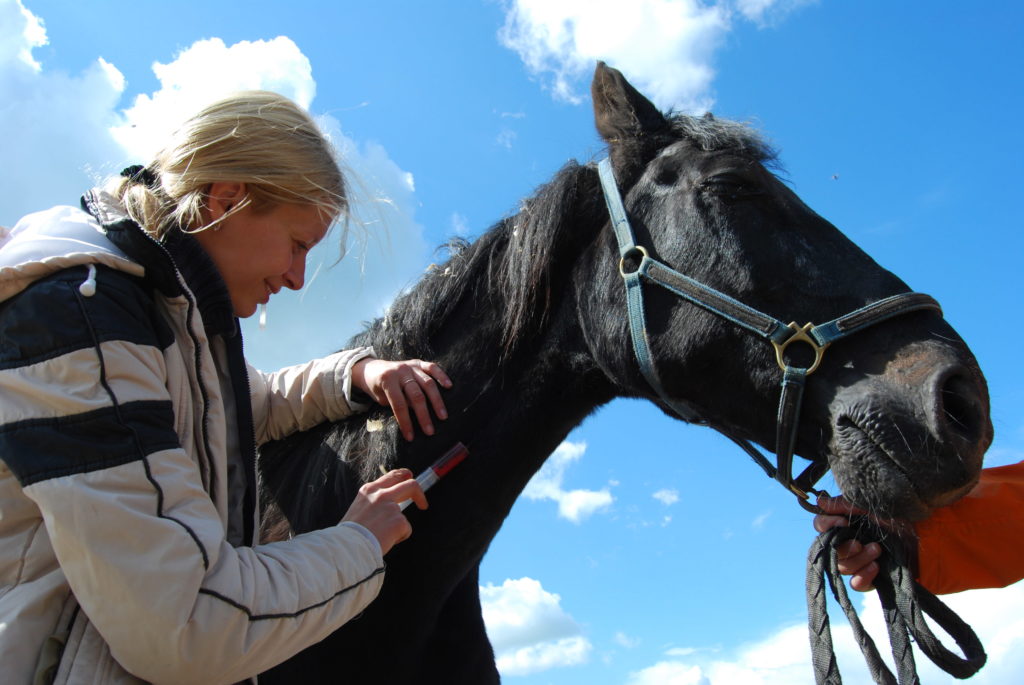Equine laminitis is a condition that impacts the laminae of the hoof. While many people think that laminitis is the same as lameness, this isn’t the case. Equine laminitis specifically targets the laminae, which can result in lameness, but is not equivalent to lameness. It is important to act quickly if you notice signs of equine laminitis in order to reduce long-term effects that may impact your horse. At Bar Bar A, we strive to provide you with the information necessary to keep your horse healthy. Our automatic horse watering systems can go a long way toward reducing dehydration and preventing substantial problems that result from dehydration. Here are a few important things to understand about equine laminitis.
What is Equine Laminitis?
Equine laminitis is a condition that horses may develop. This condition ultimately impacts the ability for blood to flow to the laminae of the hoof. This ultimately causes inflammation, swelling, and severe pain. When laminitis isn’t treated quickly, the cells will become damaged due to the lack of nutrients and oxygen that are delivered with regular blood flow. Equine laminitis can be a crippling and sometimes fatal condition for horses. Taking the appropriate steps to prevent or care for laminitis can go a long way toward protecting the health of your horses. Because this condition can have long-term consequences, it is important to ensure that you do everything that you can to appropriately treat and prevent equine laminitis.
Common Causes of Laminitis
Laminitis is linked with many of the common diseases that cause inflammation, because these can trigger inflammation in the laminae. There are many common diseases that can cause laminitis to arise. For example, diarrhea, certain types of colic, retained placenta, and severe pneumonia can all lead to the development of laminitis. Additionally, the lifestyle of a horse may also attribute to laminitis. Stress, severe infections, obesity, poor diet, and many additional problems can result in laminitis. If your horse is experiencing any of these diseases, it will be important to regularly check for signs of laminitis. This will help you to act quickly when it arises. Minimizing their stress and optimizing their diet can similarly help to prevent laminitis from occurring, which will help to protect the health of your horse.
Signs of Laminitis
It is critical to familiarize yourself with the signs of equine laminitis. This will help you to identify when it is present in order to prevent substantial issues from resulting due to the condition. Ensuring that you understand issues that can cause laminitis can help to ensure that you watch for it when it is a possibility. Keep in mind that there are two types of equine laminitis, acute and chronic. With acute laminitis, symptoms are often fast and severe, appearing unexpectedly. Chronic laminitis, however, occurs when the laminitis happens multiple times throughout the horse’s life. A horse that is experiencing laminitis will initially show an inability or reluctance to move, walk, or even stand. They may lean back to avoid placing weight on their front legs.
A horse with laminitis may even lie down and be extremely reluctant to get back up. They may be visibly lame and will likely exhibit signs of pain. A horse with laminitis may also have an increased heart rate and will often exhibit many of the same symptoms that are present in a horse with colic. Preventing colic is incredibly important in reducing the risk of a horse developing laminitis. Familiarize yourself with these signs in order to help ensure that you provide the appropriate treatment as quickly as possible.
Treatment for a Horse with Laminitis

When your horse is showing signs of equine laminitis, it is extremely important to call a veterinarian immediately. This can help to prevent permanent damage and ensure that treatment is as effective as possible. You will also want to keep in mind that a horse that has had laminitis before is much more susceptible and vulnerable to repeated occurrences of laminitis. You will need to be especially cautious with these horses to find the signs of laminitis in the early stages. While you are waiting for your veterinarian, you will want to minimize your horse’s stress. Leave a companion nearby because isolation can actually exacerbate their stress levels. You will also want to remove factors, such as food, that may be influencing or triggering their laminitis. Always follow the instructions of your veterinarian when you think that your horse is experiencing laminitis.
Prevention of Laminitis
Due to the many common causes of laminitis, there are several steps that you can take to help prevent it from occurring. It is important to ensure that you monitor the diet of your horse incredibly carefully. This can help to keep them healthy and reduce the likelihood of colic and other related issues. It is also important to ensure that you implement a good, regular exercise program for your horse. This will help to prevent obesity and aid in keeping the horse healthy. Proper hoof care is critical to minimize the possibility of laminitis. Ensure that you have a farrier care for your horse’s feet on a regular basis. This will help to keep their hooves in good condition. Following these various steps can help to reduce the likelihood of laminitis occurring.
You should also ensure that you regularly check for signs of laminitis. Be familiar with the signs and ensure that you are regularly checking for their presence. You will also need to take the steps to prevent dehydration in order to minimize the risk of colic. This is often much easier when you implement an automatic watering system to ensure that clean, fresh water is always available for their needs. Here at the Horse Drinker, we offer multiple automatic watering systems to protect the health of your horses. These systems ensure that water is always available at an appealing temperature for your horse. To learn more about our automatic watering systems and how to have one installed on your property, contact our experienced team today!

Leave a Reply